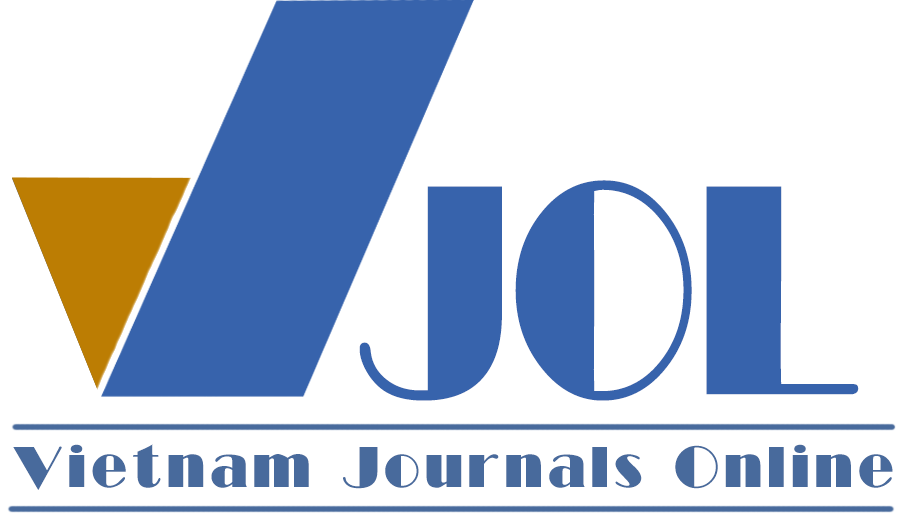The impact of economic globalization on income inequality in middle-income countries in Asia: An empirical analysis from 2018 to 2021
Authors
DOI: https://doi.org/10.57110/vnu-jeb.v4i2.237Keywords:
Economic globalization, income distribution, income inequality, middle-income countries, policy measuresReferences
Ali, F. D., & Sarkar, J. (2009). Growth consequences of foreign direct investment: Some results for Turkey. Journal of Economic Development, 34(2), 85–96. https://doi.org/10.35866/caujed.2009.34.2.004
Al-Ramahi, N. R. S., & Abu, O. M. M. (2020). Globalization, trade openness, and income inequality in Latin American countries. Economies, 8(3), 78.
Anand, R., & Mishra, S. (2017). Globalization and distribution of income: A review of the evidence. Journal of Economic Surveys, 31(3), 1–26.
Atif, S. M., Srivastav, M., Sauytbekova, M., & Arachchige, U. K. (2012). Globalization and income inequality: A panel data analysis of 68 countries. ResearchGate. https://www.researchgate.net/publication/272354050
Autor, D. (2014). Skills, education, and the rise of earnings inequality among the “other 99 percent.” Science, 344(6186), 843–851. http://piketty.pse.ens.fr/files/Autor2014.pdf
Belguidoum, A., & Hassen, M. (2020). Globalization, economic growth, and income inequality: A panel data analysis of 56 countries. Journal of the Knowledge Economy, 34(7), 1434–1447.
Berg, A. G., & Ostry, J. D. (2011). Inequality and growth: A global perspective. International Monetary Fund.
Chinn, M. D., & Ito, H. (2006). What matters for financial development? Capital controls, institutions, and interactions. Journal of Development Economics, 81(1), 163–192. https://doi.org/10.1016/j.jdeveco.2005.05.010
Corporate Finance Institute. (2022). Gini coefficient: A statistical measure of economic inequality in a population. https://ourworldindata.org/what-is-the-gini-coefficient
E. C. (2021). Income distribution measures: The Lorenz Curve and the Gini Index. Investopedia. https://www.investopedia.com/terms/l/lorenz-curve.asp
Gros, D., & Shamsfakhr, F. (2023). Inflation and inequality: Energy and food versus rents. EGOV European Parliament. https://www.europarl.europa.eu/RegData/etudes/IDAN/2023/747845/IPOL_IDA(2023)747845_EN.pdf
Iqbal, J., & Naeem, M. (2019). The nexus between financial openness and economic growth: A literature survey. Journal of Finance and Economics Research, 4(1), 1–9.
Kapsos, S., & Newson, D. (2006). Globalization, structural change, and workers in Asia. International Labour Organization. https://www.ilo.org/wcmsp5/groups/public/---asia/---ro-bangkok/documents/publication/wcms_bk_pb_122_en.pdf
Kim, J., & Lee, J. (2019). Globalization and income inequality by economic sector. Journal of International Development, 31(4), 302–326.
Le, D. T. P., & Tran, T. T. T. (2020). Income inequality and economic growth nexus: Evidence from middle-income countries in Asia. Social Indicators Research, 21(2), 56–61.
Lim, D., & Kim, H. (2015). Globalization and income inequality in Asian countries. Journal of Asian Economics, 92(2), 1–12. https://doi.org/10.1016/j.asieco.2014.12.003
Milanovic, B. (2016). Global inequality of opportunity: How much of our income is determined by where we live? Stone Center on Socio-Economic Inequality. https://stonecenter.gc.cuny.edu/files/2015/05/milanovic-global-inequality-of-opportunity-how-much-of-our-income-is-determined-by-where-we-live-2015.pdf
Milanovic, B., & Squire, L. (2007). Does tariff liberalization increase wage inequality? Some empirical evidence. National Bureau of Economic Research. https://www.nber.org/system/files/chapters/c0118/c0118.pdf
National Organization for Economic Cooperation and Development (OECD). (2018). Divided we stand: Why inequality keeps rising. OECD Publishing.
Nolan, B., & Roser, M. (2019). GDP per capita versus median household income: What gives rise to the divergence over time and how does this vary across OECD countries? Review of Income and Wealth, 65(245), 1–20. https://doi.org/10.1111/roiw.12362
Soliman, M. (2022). West Asia is now a geopolitical reality. The National Interest. https://nationalinterest.org/feature/west-asia-now-geopolitical-reality-203310
Stiglitz, J. E. (2016). Globalization and its discontents. W.W. Norton & Company.
Stiglitz, J. E. (2017). Globalization and its discontents revisited: Anti-globalization in the era of Trump. Penguin.
United Nations Conference on Trade and Development (UNCTAD). (2019). Trade and development report 2019: Financing a global green new deal. https://unctad.org/publication/trade-and-development-report-2019
United Nations Development Programme (UNDP). (2023). Mapping income inequality: The bottom 40 and top 10 percent. Data Future Platform of UNDP. https://data.undp.org/inequality-bottom40/
United Nations Educational, Scientific and Cultural Organization (UNESCO). (2022). Stat bulk data download service. UNESCO Institute for Statistics (UIS). https://apiportal.uis.unesco.org/bdds
Wood, A. (2018). North-south trade, employment, and inequality. Oxford Review of Economic Policy, 34(1), 78–96.
Downloads
Downloads
Published
Abstract View
PDF Downloaded
How to Cite
Issue
Section
License
Copyright (c) 2024 Pham Thi Linh, Pham Ngoc Huong Quynh

This work is licensed under a Creative Commons Attribution-NonCommercial 4.0 International License.
by VNU Journal of Economics and Business
Most read articles by the same author(s)
- Pham Ngoc Huong Quynh, Nguyen Bich Ha, Essential factors driving the adoption of online public services among Hanoi’s citizens , VNU University of Economics and Business: Vol. 4 No. 6






